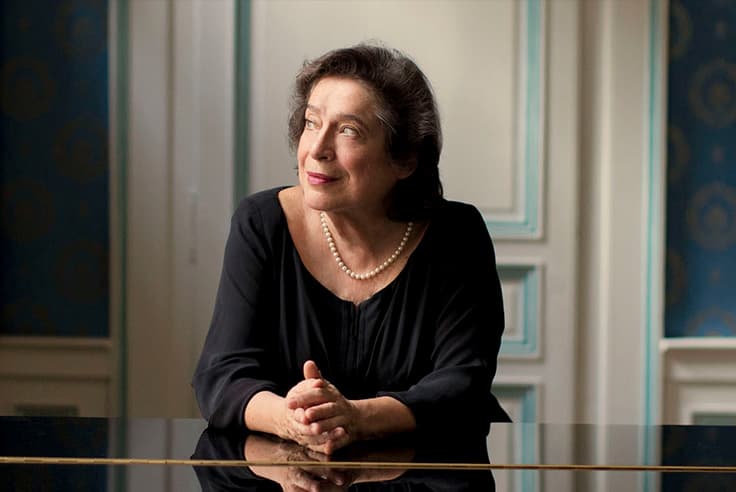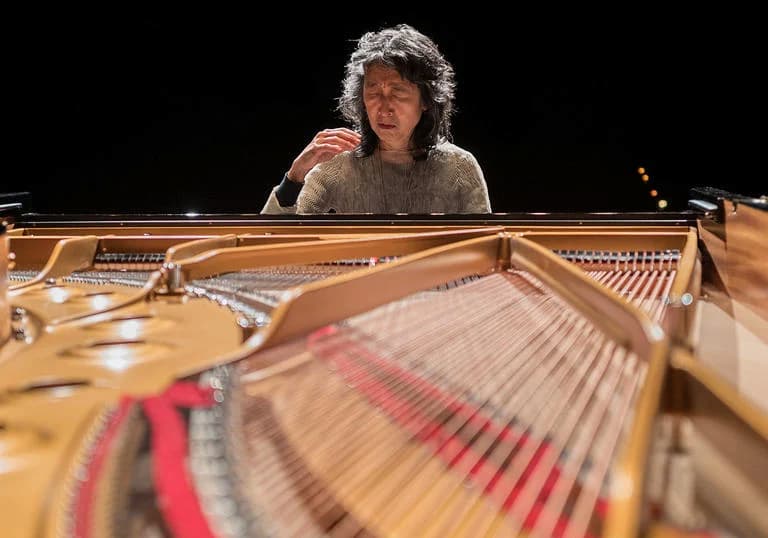It's all about the classical music composers and their works from the last 400 years and much more about music. Hier erfahren Sie alles über die klassischen Komponisten und ihre Meisterwerke der letzten vierhundert Jahre und vieles mehr über Klassische Musik.
Total Pageviews
Saturday, December 10, 2022
Natalie Cole - Autumn Leaves
Friday, December 9, 2022
When Latin Meets Classical
The Latin Music Elements in Classical Music
What is often called Latin music consists of music made in South America, from the islands of Cuba, Jamaica, and Puerto Rico to Chile, Argentina, Brazil, and the broader continent.

© bbc.co.uk
These music — as they are all unique and different depending on the place of origin, and reducing it to one style only would be too limiting — represent a fascination for the European world. Indeed, they are often much more rhythm centered than the former, and while very complex, somehow natural and organic. Additionally, they display a treatment of harmony and melody that is quite different from the one in the old continent, at times simpler but with hidden qualities. Latin music also represents a way of thinking that is different from the one in traditional European music — more on this below — and therefore which allows — for one who wishes to take inspiration from these — for creative stunts and a door to musical explorations. Furthermore, while music from South America and Western Europe might rightfully appear as being very different — particularly with the fact that most of the former are popular in its essence, while the latter is considered academic —, history has proven that they tend to work beautifully together when they meet.

© madison365.com
One interesting element to point out with their association, as a matter of fact, is that while most Western classical music avoids putting emphasis on strong percussive instruments, Latin music does very much so! And this particular reverse in the rhythmical balance is what creates such an interesting orchestral sound. It is also what makes Latin music so attractive to listeners; as it brings the focal point back to some of its original purposes; dance. Indeed, while in Europe and through baroque music, for instance, the focus had been on rhythm, and many of its musical mediums were based on dances, it all progressively faded away as the genres developed and a form of intellectualism, both from the composers and the listeners, took over. Latin music still keeps this dance element as central. In fact, it is well-known that all music is made of a pulse; a heartbeat. In the Western world, this is often represented by a crotchet — or quarter note. In Latin music, it is represented by a rhythmic cell, rather than a single entity, the most famous of it being the clave; instead of one single unit, it is the association of rhythms which constitutes the basis of music.
Latin music is a blend of South American traditional music and colonialism influence. If most of it is the result of traditional folk music evolving, it would not have taken the shape it has today if it was not for the influence of Western Europe’s instruments, such as the guitar for instance, imported from Spanish settlers. There are of course many South American composers, who not only have explored their native folk traditions, but have also included instruments often left out of the orchestra — the guitar, once again, takes a much more important role than on the other side of the Atlantic. Brower, Powell, Villa-Lobos, Rodrigo are some of the most famous names, and more recently Golijov and Guarnieri have stood out. Then there are the musicians and composers inspired by Latin music, through their travels and discoveries. The influence that the music has had on European and North American classical music though, is immense; from Varèse and his “Ionisation”, Reich — throughout his entire body of work, Gershwin and his “Cuban Overture”, Bernstein with West Side Story to Copland’s El Salon Mexico, or Milhaud’s “Le Bœuf sur le toit”.
This Latin influence has been so important — in Western European culture in general too —, that nowadays we barely notice that it is here; yet it is. Through jazz and popular music — genres in which the influence has been even greater, with bossa nova, reggae, funk, and soul music amongst others. Let’s not forget indeed, that in many instances, Latin music has entered the realms of Western classical music through the door of jazz; and it is thanks to Dizzy Gillespie, Chick Corea, Charlie Haden, Sergio Mendes, Antonio Carlos Jobim, Stan Getz, Joao Gilberto, Gil Evans, Paul Desmond and many others that European composers such as Leonard Bernstein discovered the intricate rhythms of latin music, and a fresh approach to harmony, melody, and rhythm!
Pianists and Their Composers: Franz Schubert
“Schubert’s music is the most human that I know.” – András Schiff
Schubert’s music provides the bridge between the classical and romantic eras. Yet his music was not well known during his lifetime outside of Schubert’s own intimate circle of friends. His piano music was largely neglected right up to the early part of the 20th century when it was given the attention it deserved by pianists such as Artur Schnabel, who can be partly credited for introducing it into the regular concert repertoire with pieces such as the late piano sonatas, the two sets of Impromptus, the Moments Musicaux, and the “Wanderer fantasie”. Today, these works are staples of the pianist’s repertoire, much loved by performers and audiences alike.

3D portrait of Franz Schubert © Hadi Karimi
Schubert’s musical sensibilities and invention were inspired by the human voice – he wrote over 600 songs – and lyrical melody and long-spung cantabile lines are distinctive elements of all his music.
For the pianist, his music remains an interpretational challenge and the best Schubert players have absorbed the essentials from his songs and chamber music. Because of his proximity, and admiration for Beethoven, there is a tendency among some players to approach his music like Beethoven’s; but Schubert is a composer who speaks more quietly and introspectively, even in his more declamatory moments. The skill in playing his music well is a sensitivity to these aspects without sentimentality.
Clifford Curzon

Clifford Curzon © Getty Images
British pianist Clifford Curzon (1907-1982) had a special affinity for Schubert, fostered by his studies with Artur Schnabel. His performance of Schubert’s last sonata, the D960 in B-flat, is considered by many to be one of the greatest performances ever. In this recording, his concentration and nervous intensity are so palpable it is almost like eavesdropping.
Elisabeth Leonskaja

Elisabeth Leonskaja
A protégé of the great Russian pianist Sviatoslav Richter, himself a fine Schubert player, Russian pianist Elisabeth Leonskaja is noted for her performances and recordings of Schubert’s piano music. As an artist, she is unfailingly intelligent, tasteful and musical, whose performances display great refinement, romantic fervour, delicacy, and power, all underpinned by commanding technique.
András Schiff

András Schiff
No appraisal of Schubert pianists would be complete with András Schiff, who really honours every work, and who has recorded the piano music on Schubert-era instruments, offering listeners an intriguing insight into the range of colours and nuances afforded by Schubert’s writing. Always fastidious in his close attention to the details of the score, Schiff really gets to the heart, soul, and fundamental humanity of Schubert in his playing and brings a compelling intimacy to his performances, even in the largest of concert halls.
Radu Lupu

Radu Lupu
The great Romanian pianist Radu Lupu, who died in April 2022, was described by Gramophone magazine as “A lyricist in a thousand”, who placed Schubert’s music at the centre of his repertoire throughout his career. Sensitive to Schubert’s mercurial moods, his playing demonstrates immense control, subtlety of shading and dynamic nuance, an almost ethereal luminosity of sound, and a myriad range of colours which fully reveals Schubert’s inventiveness and imagination, the rich seam of his ideas, and his forward vision.
Mitsuko Uchida

Mitsuko Uchida © Geoffroy Schied
Like András Schiff, Mitsuko Uchida has an unerring ability to bring an intimacy and sense of a conversation to her performances of Schubert’s music, and she does so with clarity, commitment, and a clear sense of the narrative line, the lightness and lyricism, and also the roughness in his music. Uchida is very alert to Schubert’s idiosyncrasies, his chiaruscuro and elusive, shifting moods: beauty and delicacy, poignancy and loneliness abound in her performances of this composer whose music has been a lifelong presence for her.
Other fine Schubert players to explore include Shura Cherkassy, Rudolf Firkusny, Walter Gieseking, Rudolf Serkin, Wilhelm Kempf, Paul Lewis, Maria João Pires, Alexander Lonquich, Imogen Cooper, Krystian Zimerman, Murray Perahia, and of course Alfred Brendel.
